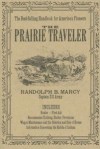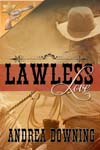 LaDene Morton and I first met at the Women Writing the West Conference in 2012. LaDene, who writes both fiction and non-fiction, served this year as VP Conference for WWW in her home town of Kansas City, MO—a place of particular interest in her writing, which centers on the American West. Her historical fiction, What Lies West, was a 2010 Finalist in the WWW WILLA competition. After reading and thoroughly enjoying the book, I asked LaDene if she would share some of the huge amount of research
LaDene Morton and I first met at the Women Writing the West Conference in 2012. LaDene, who writes both fiction and non-fiction, served this year as VP Conference for WWW in her home town of Kansas City, MO—a place of particular interest in her writing, which centers on the American West. Her historical fiction, What Lies West, was a 2010 Finalist in the WWW WILLA competition. After reading and thoroughly enjoying the book, I asked LaDene if she would share some of the huge amount of research materials she found concerning what it was like to cross that great unknown prairie of the mid-1800s, starting out from Missouri. I’m delighted she agreed.
materials she found concerning what it was like to cross that great unknown prairie of the mid-1800s, starting out from Missouri. I’m delighted she agreed.
LADENE MORTON:
When I was invited to do this guest blog, I had no idea how much I would enjoy revisiting an earlier research project. Andi has asked me to share some of what I’ve learned about the mechanics of preparing to travel the Overland Trails, discovered during research for my 2010 novel, What Lies West. I assume that’s something that clicked in her imagination when she read the book. It certainly did click with me, and I was more than happy to return to those travels – mine as I researched, and my characters’ as they set out west.
The novel begins in 1850 with a young widow seizing an opportunity to travel west with a wagon company. Lina Clark, my protagonist, had a strategic advantage over others she would join on the trip – she had experience as an outfitter – and so she would know better than most what would be needed. Here, some level of detail was required. So Lina – and I – needed a shopping list. Easy enough, for there’s no end of scholarly research and primary sources that provide similar information to form what would be reasonable cargo. Two notable travel guides of the day remain in print, first and most infamously the 1845 Hastings Guide[1] and, later, Captain Marcy’s The Prairie Traveler[2].  The books included information on what to take, what the general threats and conditions were like (like a good travel brochure, generously accurate), descriptions of the terrain they would cross (also a bit rosy hued), and the routes to take.
The books included information on what to take, what the general threats and conditions were like (like a good travel brochure, generously accurate), descriptions of the terrain they would cross (also a bit rosy hued), and the routes to take.
About those routes – it was the Hastings’ guide that the Donner Party took with them, which led them – among other unwise decisions – to choose the not-coincidentally named Hastings Cutoff. After that, the War Department, eager not to have all its efforts to recruit settlers end in similar tragedy, commissioned Captain Randolph Marcy to write The Prairie Traveler in 1859, which became the preferred guidebook.
The modern reader would certainly find it hard to glean the useful information from these books. Accustomed as we are to graphs, charts and other visual displays of information, these books are densely worded narratives. But it was the written language of the day, after all, and literacy was relatively high back then, particularly in the eastern states where the opportunities for recruitment were rich. Even if they could read it, it’s doubtful many did, or not thoroughly. The spirit of adventure that many sought – particularly the gold rushers and speculators – made over preparation anathema. They had manifest destiny. What more did they need, right?
Actually, they needed less. For the record, here is a summary list of what those books advise bringing:
- Per person, about 250 pounds of food stuffs, sixty percent of which was flour. The rest included bacon, coffee, sugar, potatoes, dried fruit, oil and corn. For bedding and such, a pillow and three blankets, a towel and some canvas or oil cloth.
- For the household items, a camp kettle, various skillets and pans, and a coffee pot. Utensils, pans and cups of course. A tin bucket – no wood, which would shrink and render the tool useless. An axe, a hatchet and a spade, some chain, two hemp lariats and matches in bottles. An awl and some buckskin for leather repair was greatly advised.
- The wagon and its equipment accounted for most of the weight to be carried. The two extra bows and wagon tongues, related hardware and a tar bucket would have also consumed a lot of space, which was at a premium. Each wagon would have carried at least two weapons and plenty of ammunition, too.
- Personal items for each traveler would have been grooming and hygiene items at their most basic, simple hand tools like knives and notions, and no more than an extra of the basic clothes items for man or woman. And of course, a hat was a must.
That’s it. That’s all one could take – and even that might not be the right mix, depending on the trials of each wagon that made the trip. Everyone’s heard stories about wagons having to jettison cargo that should never have been loaded. Pianos, cast iron stoves, walnut bed frames and grandfather clocks are among the more illogical choices that came back to me as I re-traveled this road for this piece. History gathered these sightings of these relics in the journals of those who passed them. They wrote of them as fretful, foreboding totems along the trail.
But that list is about more than what to take. It’s about what you can make from what you have. The awl and buckskin turned saddle leather into shoes. The needle and thread mended and crafted scraps into quilts. Wagons were turned into rafts with a good slather of tar in the box. Broken bits of wagon carriage were carved into other useful tools.
I’ve often thought of the loneliness of those cast off bits of a life left behind as lonely sentinels along the trail. But after revisiting this, I see them now, too, as the natural castings of life. Most of life molts or sheds or breaks from a carapace to grow. Maybe, after all, those cast offs weren’t just sentinels of despair along the road, but milestones, too – milestones that marked the sacrifices they were willing to make to start that new life.
[1] Hastings, Lansford W., The Emigrants’ Guide to Oregon and California, George Conchlin Publishing, Cincinnati, 1845.
[2] Marcy, Randolph B. (Captain, US Army), The Prairie Traveler
***********************************************************************
LaDene is currently revamping her website, but she can be reached at ladmorton@aol.com. She has very generously agreed to send a copy of What Lies West to Irene Bennett Brown. Our thanks to all who left comments.
What Lies West is set in the mid-nineteenth-century American frontier, where everyone is headed out in pursuit of a dream. Carolina Clark, the young widow of a ne’er-do-well overland trader, can’t afford to dream, thanks to the bankrupt business her late husband has left her. With no prospects, Lina is goaded into traveling west as well, with two unexpected partners, one a would-be madam, the other a want-to-be cavalryman. In the long journey west and the life she pieces together there, Lina slowly discovers that within her lies her own dream, a dream she never saw coming.

















Wow! I really enjoyed reading this, LaDene and Andrea. When I noted the specifics of what each traveler needed to bring with them, it reminded me of a piece of research I found — a list of items at an 1832 rendevous and the cost of each item. I should recover this info as I am going to need it pretty soon for my WIP 🙂 I also made sure the two books that were used in LaDene’s research are now on my book wish list. Thanks for sharing!
LikeLike
Glad you enjoyed this, Alice. I found it absolutely fascinating. I’ll look forward to your book when it’s finished!
LikeLike
Thanks, Alice. So glad it was helpful. Both the Hastings and the Marcy books are in the public domain, and as such are free books. Enjoy!
The Prairie Traveler – http://www.gutenberg.org/ebooks/23066
Hastings Guide – http://xroads.virginia.edu/~hyper/iguide/or-table.htm
LikeLike
Thanks, LaDene, for the links on these two books! Will take a look…
LikeLike
My what great detail and your comments on relics left on the trail were so well written. I’m glad to know the Marcy book is free, and plan on getting it. Most of my Western historical’s did not include wagon trains, though a couple have. Thanks to you and Andi for such a helpful post.
LikeLike
Oh golly, La Dene – your closing comment is an example of what I love about your writing. “Maybe, after all, those cast offs weren’t just sentinels of despair along the road, but milestones, too – milestones that marked the sacrifices they were willing to make to start that new life.” I think that is applicable to today’s society, too. Don’t you? Loved this post!
LikeLike
It’s been quite a while since I’ve read a story of an overland journey; you’ve sorely tempted me and then some!
LikeLike
I did a series of posts on my own blog about the wagon trains – and one entry was specific about what they would have had to bring along, especially in the early days. http://www.celiahayes.com/archives/362
Captain Marcy’s guide is invaluable, by the way.
LikeLike
Thanks for sharing that with us, Celia. Looks like you also came upon stories of items jettisoned along the route.
LikeLike
Velda and Karen – Thanks so much for your kind words. As one new to blogging (short form is not typically my thing), you give me encouragement to try more!
LikeLike
Irene – I’m flattered to have tempted you – and of course, I hope you’ll give in! Thanks.
LikeLike
Celia – I checked out your pieces. Seems we have similar interests. Thanks for sharing that.
LikeLike
Very interesting. I love to see lists of “things to take” as I’m a list-maker myself. Thanks for sharing, LaDene and Andrea.
LikeLike
I’m a list-maker, too, Mary, and have to laugh. We complain about how little airlines now permit us to take but I think my vacation check list is longer than the prairie travelers!
LikeLike
LaDene, what an interesting post. I just finished reading WILLA Winner Sandra Dallas’s “True Sisters” about the Mormon handcart journey — talk about having to travel light! Imagine having to carry everything you own in a cart that you pull along the trail!
LikeLike
Suzanne – Rich story, the handcart journey. I suppose not having to carry all that extra equipment for the wagon and team helped lighten the load, but to be your own “beast of burden?” Truly amazing.
LikeLike
Mary – Count me among the list-makers as well, as well as fancying myself an ace at packing
. Perhaps that’s one of the things that appealed to me about the trails!
LikeLike
Interesting! Love this “most of life molts, or sheds, or breaks from a carapace to grow” Also learned a new word “carapapce.” 🙂 I have your book,. It’s on the shelf, waiting its turn with the others. I wrote Trapped! a story of Virginia Reed, 12, with the Donner Party in 1995 and read the Hastings book and others. My favorite of Donner books is The Mothers by Vardis Fisher.
LikeLike
Eunice – Flattered to know WLW is in the queue! Thanks for stopping by.
LikeLike
This is incredibly interesting. thank you for sharing
LikeLike
Thanks, vlmbatman. I loved sharing all that great research.
LikeLike
Enjoyed the post – thanks much for sharing the information.
LikeLike
Thanks for stopping by, Ashantay! Much appreciated as usual.
LikeLike
My pleasure, Ashantay. Thanks for stopping by.
LikeLike
Great post. What wasn’t taken was as intriguing as what was. I didn’t see any soap on the list, although I assume a few homemade lye bars would have made it. Must have been able to smell the wagon train coming from miles away.
LikeLike
L.A. – Good catch about the soap. That was in the grouping I included in the personal hygiene lot, but as you might guess, the soap used was all purpose – general hygiene, laundry, first aid, whatever was needed. Thanks for your interest.
LikeLike
Hi LaDene, I grew up watching Wagon Train and everything about traveling west interests me. While in Jr. High, I read Jubilee Trail and on my, I was hooked. I’ll have to get a copy of the Prairie Traveler.
A friend invited me to join Women Writing the West. I think I better take the plunge. Hopefully we’ll be able to attend the conference this year.
I love the premise of your book. If I don’t win the copy, I’ll buy one and add it to my growing stack of books TBR.
Very best to you!
Linda LaRoque
http://www.lindalaroque.com
LikeLike
Linda, thanks for the kind words. Hope you get through the TBR pile asap! And as to Women Writing the West, I couldn’t recommend it more highly.
LikeLike
Loved reading about your research, and I love finding out about the primary resources behind fictional books. Just finished reading Prairie Journey by Frances Jenner (another WWW er) Such an amazing trip these pioneers took!
LikeLike
Agreed, Nancy. Great fodder for writers of all persuasions. Thanks for stopping by Andrea’s great site.
LikeLike